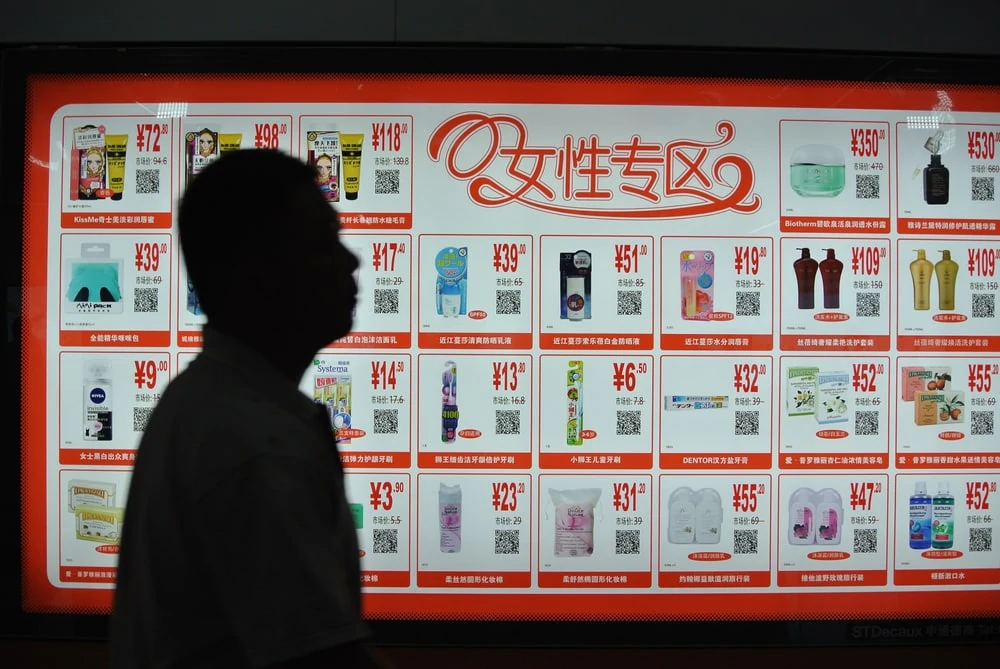REDFERN DIGITAL AND CBBC HAVE PARTNERED TO PRESENT A FOUR-PART SERIES ON DIGITAL RETAIL IN CHINA. THIS PART EXPLORES HOW TO BUILD YOUR ONLINE CREDIBILITY IN THE CHINESE ONLINE RETAIL SPACE
How is the retail consumer journey different between Chinese consumers and UK consumers?
The entire process is quite different for Chinese consumers, starting with how they begin their brand or product research. Instead of using a search engine, Chinese consumers tend to search directly on social media or on e-commerce platforms for brand and product details. Having a strong presence on these platforms is essential when it comes to establishing brand credibility in the China market.
What are the main social and e-commerce platforms used in China?
There are a number of platforms that Chinese users utilise for different purposes. Below are a few of the largest:
- WeChat is a social platform that has its own eco-system and is essential for brands that want to build up credibility and community.
- Tmall (owned by Alibaba) and JD are among the largest e-commerce platforms in China.
- Video-sharing platforms that are currently most popular include Bilibili, Douyin and Kuaishou.
- Weibo is more of a short form content platform that can be used for spreading brand awareness.
- Zhihu is the largest Q&A platform in China and is known for its professional content.
- Xiaohongshu (Little Red Book) is platform where users can share their experience or reviews of products and services.

User demographics on the various social platforms are very different
How do brands choose which platforms to market on?
The answer to this is highly dependent on the brand category, the type of product or service, and the brand’s target audience. The user demographics on the different social platforms can be very different: for example, Xiaohongshu has a largely female user base, while Douyin has a very young user base. That being said, WeChat is a platform that all brands should take advantage of.
Xiaohongshu has a largely female user base, while Douyin has a very young user base
Additionally, platform connectivity is extremely important to take note of and is something that can change from month to month. Due to competition between each other, some social platforms do not allow for direct linkage to some e-commerce platforms, for example, WeChat does not allow for direct linkage to Tmall. Therefore, any marketing strategy and campaign to drive sales to online channels should take this into account.
What different ways can brands leverage these social platforms to build credibility?
When marketing online, brands should utilise both owned media and paid media. Owned media is content that is published through the brand’s own accounts, for example, through the brand’s official WeChat account. Content marketing through own media is great for building the brand reputation and developing a reliable touch point through which consumers can learn about the brand. However, it is more of a long-term process and is more about validation than immediate sales. Therefore, brands should use a combination of owned media and paid media. Paid media are paid forms of marketing that can include promotional tools built into the platforms, product seeding, key opinion leaders, and programmatic ads. Paid media allows for more immediate sales and exposure, but cannot build up the brand reputation alone in the long run.
Brands should utilise both owned media and paid media
Are there any other tips brands need to remember when it comes to building up the brand reputation?
- Brands should always ensure consistency in their brand image, key visuals and content tone across all marketing touch points. Doing so will allow the brand to create a stronger impression with the consumer and be more recognisable.
- Brands should also strive to have a variety of different touch points that drive users to the sales channels in order to intercept Chinese consumers in their purchase decision-making journey. The touch points should be across a number of different platforms, through a mixture of own and paid media. This could mean running the brand’s WeChat account, while also collaborating with KOLs on Douyin and Weibo.




